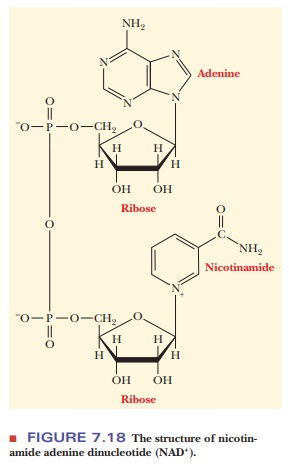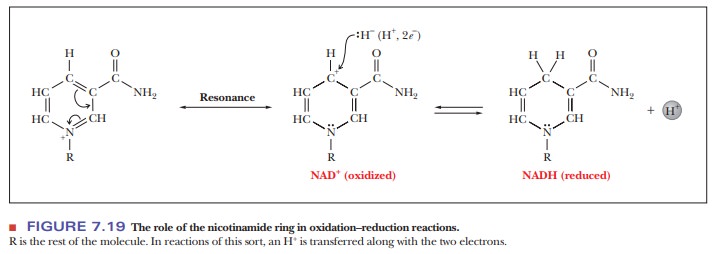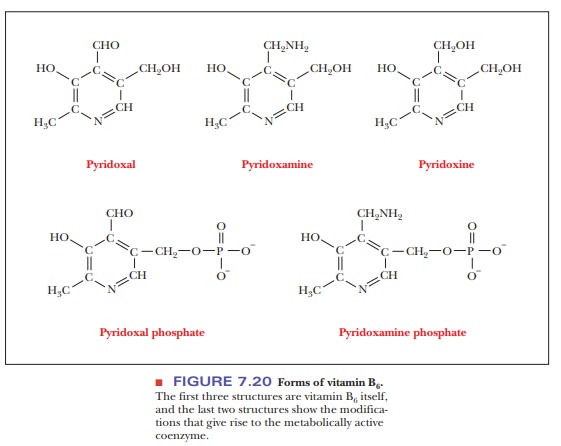Chapter: Biochemistry: The Behavior of Proteins: Enzymes, Mechanisms, and Control
Coenzymes
Coenzymes
Cofactors are nonprotein substances that take part in enzymatic reactions and are regenerated for further reaction. Metal ions frequently play such a role, and they make up one of two important classes of cofactors. The other important class (coenzymes) is a mixed bag of organic compounds; many of them are vitamins or are metabolically related to vitamins.
Some of
the most important organic coenzymes are vitamins and their deriv-atives,
especially B vitamins. Many of these coenzymes are involved in oxidation–
reduction reactions, which provide energy for the organism. Others serve as
group-transfer agents in metabolic processes (Table 7.1). We shall see these
coen-zymes again when we discuss the reactions in which they are involved. For
the present, we shall investigate one particularly important
oxidation–reduction coenzyme and one group-transfer coenzyme.

Nicotinamide
adenine dinucleotide (NAD+) is a coenzyme in many
oxidation– reduction reactions. Its structure (Figure 7.18) has three parts-a
nicotinamide ring, an adenine ring, and two sugar–phosphate groups linked
together. The nicotinamide ring contains the site at which oxidation and
reduction reactions occur (Figure 7.19). Nicotinic acid is another name for the
vitamin niacin. The adenine–sugar–phosphate portion of the molecule is
structurally related to nucleotides.


The B6
vitamins (pyridoxal, pyridoxamine, and pyridoxine and their phos-phorylated
forms, which are the coenzymes) are involved in the transfer of amino groups
from one molecule to another, an important step in the bio-synthesis of amino
acids (Figure 7.20). In the reaction, the amino group is transferred from the
donor to the coenzyme and then from the coenzyme to the ultimate acceptor
(Figure 7.21).


Summary
Coenzymes are nonprotein substances that take
part in enzymatic reac-tions and are regenerated for further reaction.
Metal ions can serve as coenzymes, frequently
by acting as Lewis acids.
There
are also many organic coenzymes, such as NAD+ and
FAD, most of which are vitamins or are structurally related to vitamins.
Related Topics